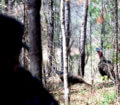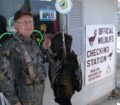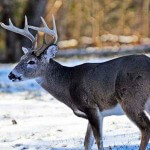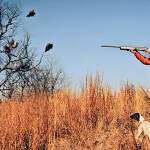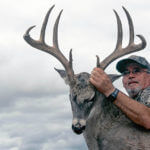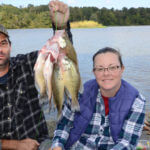 Editor’s Note: The one thing I know for certain is that the only people who don’t miss turkeys are the people who don’t hunt them. Regardless of how well you shoot, how close you let the turkeys get, what type of gun and ammunition you use, and how many years you’ve been hunting, you’re still going to miss turkeys. Turkeys have an uncanny ability to dodge shots. I don’t know how they do it; they just do. This week we’re looking at reasons why I’ve missed turkeys. Most hunters probably won’t tell on themselves. However, I know that the turkey hunters who read this article will appreciate my honesty and perhaps learn from my mistakes.
Editor’s Note: The one thing I know for certain is that the only people who don’t miss turkeys are the people who don’t hunt them. Regardless of how well you shoot, how close you let the turkeys get, what type of gun and ammunition you use, and how many years you’ve been hunting, you’re still going to miss turkeys. Turkeys have an uncanny ability to dodge shots. I don’t know how they do it; they just do. This week we’re looking at reasons why I’ve missed turkeys. Most hunters probably won’t tell on themselves. However, I know that the turkey hunters who read this article will appreciate my honesty and perhaps learn from my mistakes.
Avid turkey hunter Dale Faust and I had climbed to the top of a mountain in Montana to take a Merriam’s gobbler that was screaming at the top of his lungs. We’d moved into position to call to the bird. I had my back against one pine tree, and a smaller 6-inch pine was directly in front of me. Suddenly, the big tom walked into a clear, open field, not 30 yards from where I sat. When the turkey turned its back to me, I shouldered my Remington 1187 (www.remington.com). The turkey stepped right in front of the pine tree in front of me, so I leaned out slightly. And, as the bird broke his strut and stuck his head up to look for the hen, I aimed and squeezed the trigger. The gobbler flew off. I couldn’t believe it. How could the turkey fly off with that much lead in his head? I chased the bird, thinking he was probably going to fold-up and drop. But he didn’t. He flew about 70 yards to another mountainside and then took off running.
 “How in the world did you miss that gobbler with as clean a shot as you had?” Faust asked me. I dropped my head and said, “I don’t know. I can’t believe I missed that bird.” When you miss a gobbler as cleanly as I did, your natural instinct is to blame your gun, your shells, your camouflage, your guide, your underwear, your breakfast and/or your upbringing. But I had no excuse. “Go sit down by the tree and try to relive the shot,” Faust suggested. I marched over to the tree, sat down, mounted my shotgun and then leaned out so I could aim behind the tree that was in front of me. “There’s your problem, John.” Foust laughed. “I see what you did wrong. Look where the bead on your shotgun is.” I couldn’t believe it; I had canted my gun (rolled it off my shoulder) to the left. Although I was looking down the barrel, the bead was off so far that I must have aimed behind the turkey.
“How in the world did you miss that gobbler with as clean a shot as you had?” Faust asked me. I dropped my head and said, “I don’t know. I can’t believe I missed that bird.” When you miss a gobbler as cleanly as I did, your natural instinct is to blame your gun, your shells, your camouflage, your guide, your underwear, your breakfast and/or your upbringing. But I had no excuse. “Go sit down by the tree and try to relive the shot,” Faust suggested. I marched over to the tree, sat down, mounted my shotgun and then leaned out so I could aim behind the tree that was in front of me. “There’s your problem, John.” Foust laughed. “I see what you did wrong. Look where the bead on your shotgun is.” I couldn’t believe it; I had canted my gun (rolled it off my shoulder) to the left. Although I was looking down the barrel, the bead was off so far that I must have aimed behind the turkey.
While hunting in Missouri with three-time World Champion turkey caller, Don Shipp of Arkansas, I had a gobbler strutting in the field at 40 yards. “Do you think you can make the shot?” Shipp asked me. “Sure, I can,” I said with a degree of confidence that came from years of bagging gobblers. Steadying my shotgun, I waited for Shipp to make the gobbler stick up his head with his calling. When the bird’s neck was fully extended, I aimed for the base of the wattles and squeezed the trigger. Much to my surprise, the gobbler took to the air. As the bird started flying directly toward us, I mounted my shotgun and tried to find the flying gobbler in my scope. I saw feathers and squeezed the trigger, but once again I missed the target. If I hadn’t used my scope, I probably would’ve killed that turkey. But I hadn’t had to make a shot at a flying gobbler very often.
To learn more about turkey hunting, check out John E. Phillips’ print, Audible and Kindle turkey books at https://johninthewild.com/books/#turkey. For a free copy of John E. Phillips’ “The Turkey Gobbler Getter Manual,” go to https://johninthewild.com/free-books/.

